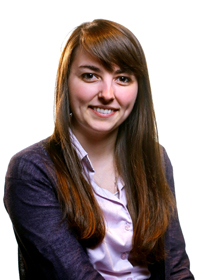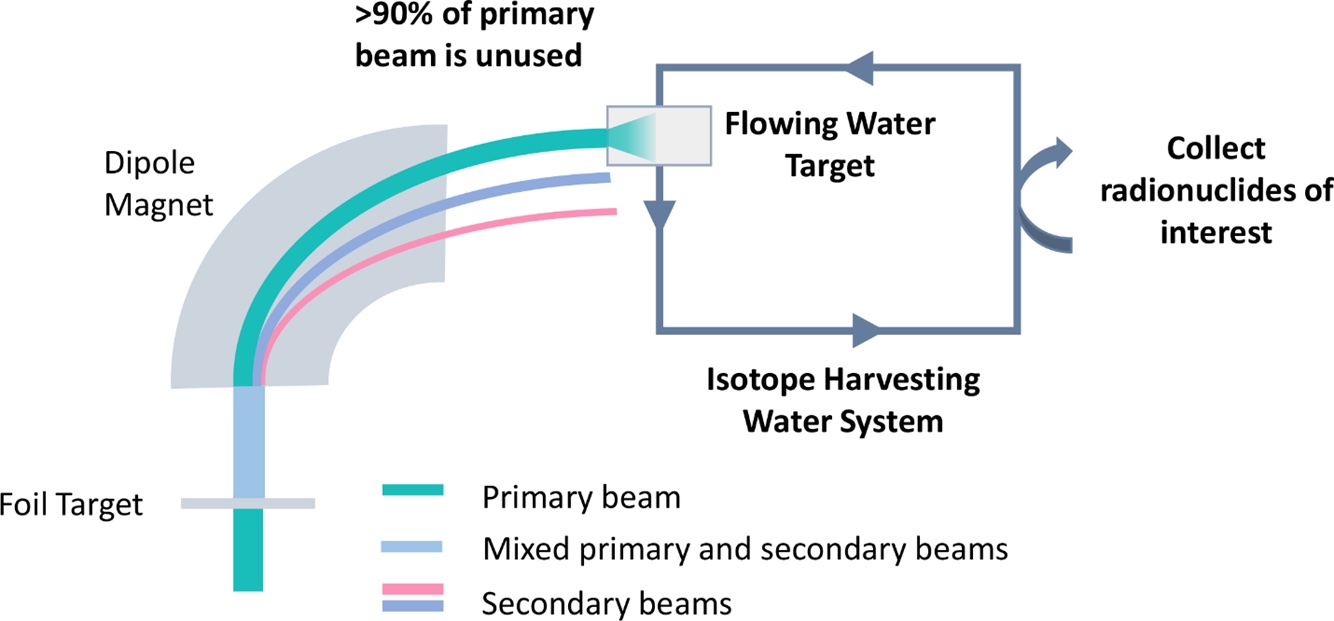
E. Paige Abel
Michigan State University
E. Paige Abel was in eighth grade when a physical sciences course, taught by the high school chemistry teacher in her hometown on Michigan’s Upper Peninsula, ignited her passion for chemistry. “I just loved it,” Abel says, “because it seemed like a puzzle that I could solve.” She read the textbook on her own, excited to learn more, and returned to class with questions.
That enthusiasm propelled Abel through a chemistry major at Saint Mary’s College in Indiana. In her first research project, she helped develop paper-based diagnostic tools that could be used in the field to help quickly screen for counterfeit pharmaceuticals. It was exciting to see this complex world of science tackling real-world problems, she says. “I could see how well chemistry can help people. That way of thinking about science stuck with me.”
Abel also got her first taste of nuclear chemistry through a Department of Energy (DOE) summer school that sends undergraduates to national laboratories for a bootcamp-style experience comprised of courses and lab work. In six weeks at Brookhaven National Laboratory, she became fascinated by the science and its potential applications, particularly in medicine. That led her to Ph.D. research at Michigan State University with Greg Severin and a DOE National Nuclear Security Administration Stewardship Science Graduate Fellowship (DOE NNSA SSGF).

At Michigan State, Abel focused on a new way to produce radioactive nuclei, capitalizing on facilities that do other fundamental nuclear research, such as the university’s National Superconducting Cyclotron Laboratory. Its beams accelerate heavy nuclei from oxygen to uranium and smash them into targets at nearly half the speed of light, producing exotic fragments for research studies. Much of the accelerated beam, however, passes through the target foil and remains unreacted before it’s sent to a solid piece of metal to block it. Abel and her colleagues devised a way to send the beam to a flowing water target to collect interesting isotopes, particularly calcium-47 from one of more commonly used beams, calcium-48. Calcium-47 decays to scandium-47, a difficult-to-produce nucleus with potential roles as a diagnostic tracer molecule and a cancer radiotherapy.
During her 2019 Lawrence Livermore National Laboratory practicum, Abel worked with Ken Moody and Narek Gharibyan on a nuclear forensics project, designing a method to produce tungsten-188 nuclei, rare particles that a detonating nuclear weapon can produce. The materials can be used for experiments on complex nuclear reactions and to interpret data from past nuclear tests.
It was an ambitious project to conduct in just a few months, Abel notes. She completed training, worked on separation methods, participated in the beam experiment and isolated the resulting radioactive samples. “I don’t think I could have asked for a better practicum,” she says. “I got to experience a wider range of what radiochemistry has to offer.”
Abel completed her degree in December 2020 and now works as a radiochemist for Niowave, a Lansing, Michigan, company that produces radiopharmaceuticals. Besides the practicum, she says the DOE NNSA SSGF offered opportunities to learn about other disciplines and to share her research. “It pushed me out of my comfort zone and helped me have intelligent conversations with other scientists about their work.”
Image caption: E. Paige Abel and her colleagues have used a stable, primary accelerated beam at the National Superconducting Cyclotron Laboratory to produce exotic radioactive secondary beams. A large portion of the initial beam that typically remains unreacted at the target is separated from the radioactive-cocktail beam before hitting a beam stopper. The team developed a flowing-water target system to replace the beam blocker, allowing them to harvest isotopes such as calcium-47. Credit: E. Paige Abel, Katharina Domnanich, Hannah Clause, Colton Kalman, Wes Walker, Chirag Vyas and Greg Severin.


